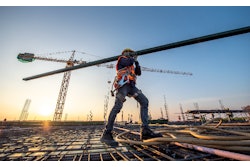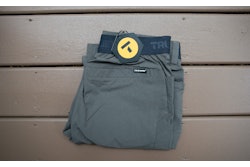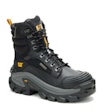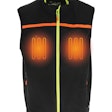
While a construction worker may have a preference for wearing breathable work pants on the job, several factors need to be considered. The material needs be able to withstand the wear and tear that may be encountered on the job.
The ability to move without impediment on the job is another factor. Storage space for tools and necessary electronics may be desired.
Features of Breathable Work Pants
Breathable work pants are favored for their ability to allow air to flow through the fabric, helping to keep the person wearing it cool and comfortable by wicking away moisture and preventing excess sweating, which may lead to hypothermia.
Improved air circulation in breathable material enables the body’s natural cooling mechanisms to kick in and prevent overheating when conducting physically demanding tasks. Reduced odor and bacteria build-up found when wearing breathable pants is a key factor when working for extended time periods.
Typical fabrics for construction worker’s pants that enhance breathability include cotton, rip-stop, mesh or ventilated panels, polyester, nylon and blended fabrics.
Only for Warm Weather?
While such work pants are especially favored during the spring and summer, not all of them may keep a construction worker warm in the cooler weather. For the impending cold weather in many parts of the country, construction pants with proper insulation or layering options are favored.
Workers choosing to wear breathable work pants in colder weather might consider layering thermal underwear underneath them. Wind and water resistance are other factors that should be sought in choosing breathable work pants.
Breathable fabrics offer many benefits in the cold weather. Given that they dry faster, they are easier to maintain during the day and as such maintain warmth and comfort during a long work day in cold weather. Reduced condensation of breathable fabrics mitigates the potential for lowered insulation properties in the pants and increases the comfort level.
Options to Consider
Cotton pants can be an option. Cotton is considered breathable in that it is moisture-wicking and allows air to circulate.
Heavyweight cotton is more dense and heavier than other cotton materials and is usually 12 ounces or heavier, allowing the person wearing it to keep warm in cold weather. Cotton serves as a base for other materials such as denim and duck which can improve the thermal qualities of workpants.
Additionally, heavyweight cotton fabrics such as canvas may offer water resistance. Cotton canvas is considered durable, breathable and offers good protection against the cold and wind. Insulation such as fleece or flannel lining also offers breathability and warmth.
Fleece provides insulation as well as warmth. As an outer layer, it is considered as durable as nylon or polyester. As an inner layer, it wicks away moisture and traps warm air. Polyester is lightweight and dries quickly. It is sometimes blended with other fabrics such as cotton or wool to enhance breathability, wick away moisture and improve its thermal insulation properties.
As a natural fiber, wool provides good breathability and insulation, as well as offering warmth if it becomes wet and as such can effectively regulate body temperature.
Softshell fabric is another option for cold weather breathable construction pants. Softshell has three layers. The outer layer is a high-density water repellent polyester that provides the pants with good resistance to rain or snow. The middle layer is a breathable membrane that allows moisture to escape. The inner microfleece layer ensures optimal thermal insulation.
Nylon construction pants also provide breathability and warmth in the winter. Treated with water-resistant or windproof coatings helps enhance its performance in cold or windy conditions.
Thermoregulating Fabric
New to apparel manufacturing is the use of thermoregulating fabrics.
According to a 2019 article in Scientific American, “Researchers at the University of Maryland, College Park, led by YuHuang Wang and Ouyang Min, constructed this self-regulating fabric from infrared-sensitive yarn that reacts to temperature and humidity. When the microenvironment between a person’s skin and the garment changes, the strands constrict to vent more heat—or expand to hold that warmth closer to the body. Wang maintains his fabric is the first to actually change form in response to the environment.”
Safety is always a priority when choosing construction work apparel, including pants. Check with a safety manager to ensure clothing being worn at the jobsite meets all safety requirements.















